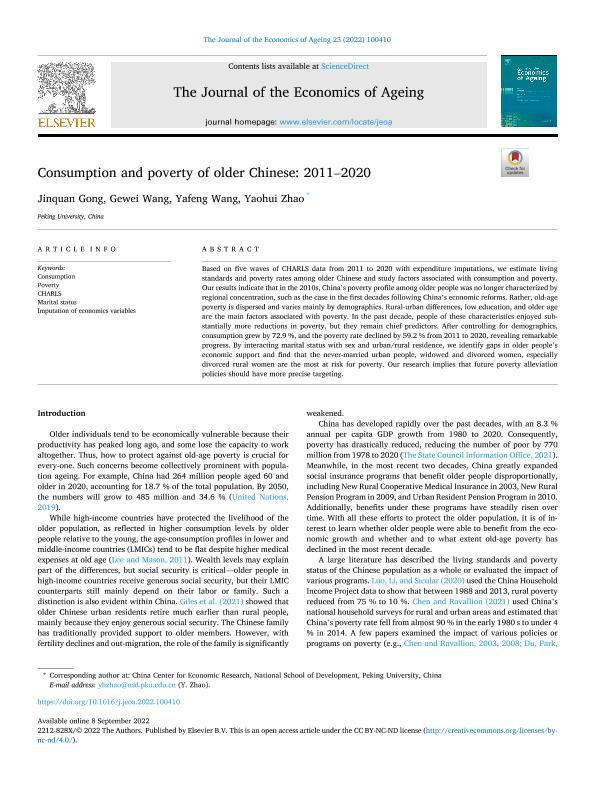Related records: En: The Journal of the economics of ageing . - Oxford : Elsevier ScienceDirect, 2021-. - 31/10/2022 Volumen 23 - 2022 , 12 p.Materia / lugar / evento: Consumo Pobreza Calidad de vida China Other categories: 931.2
Consumption and poverty of older Chinese: 2011-2020
Related records: En: The Journal of the economics of ageing . - Oxford : Elsevier ScienceDirect, 2021-. - 31/10/2022 Volumen 23 - 2022 , 12 p.Materia / lugar / evento: Consumo Pobreza Calidad de vida China Other categories: 931.2


